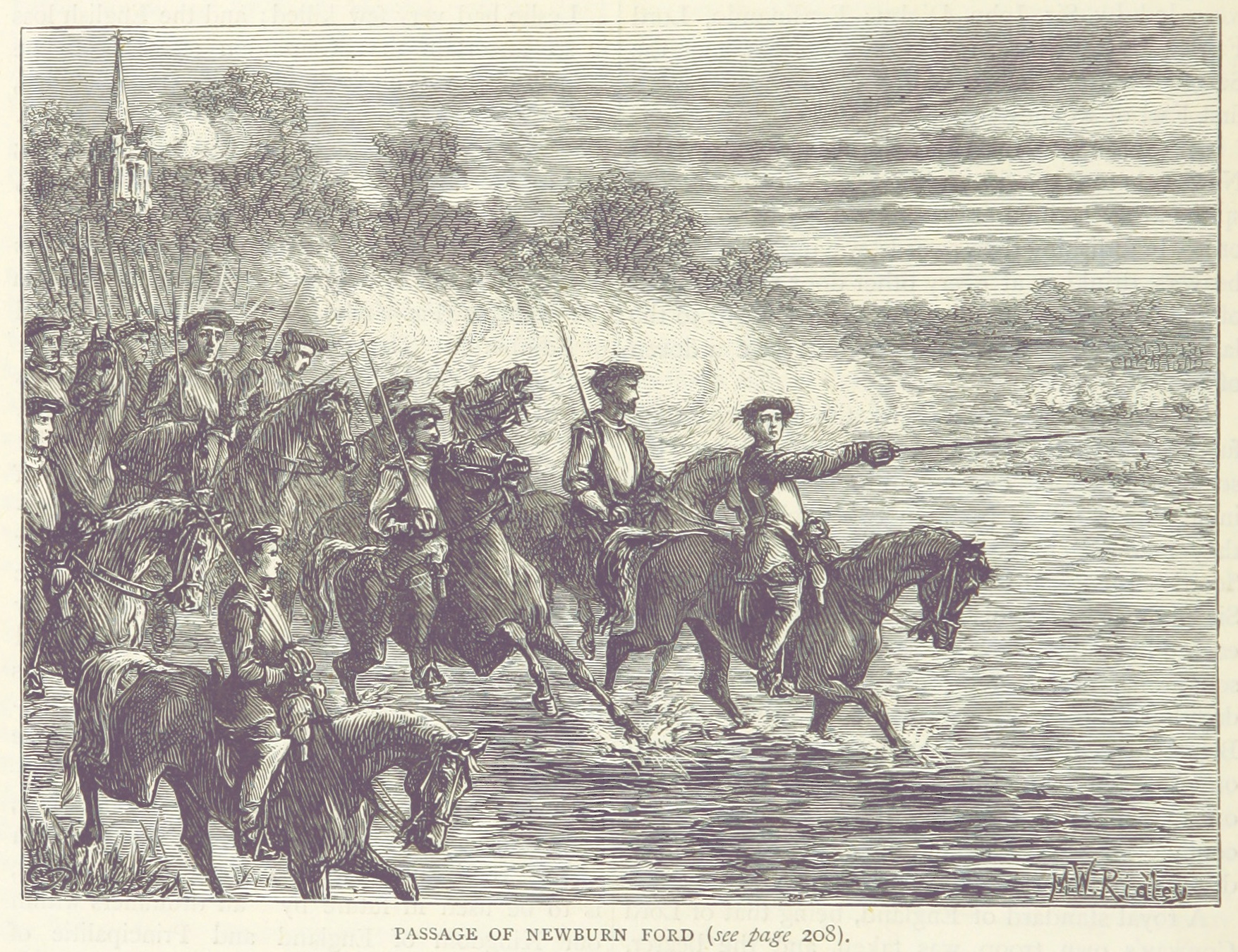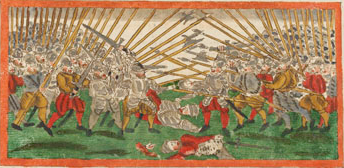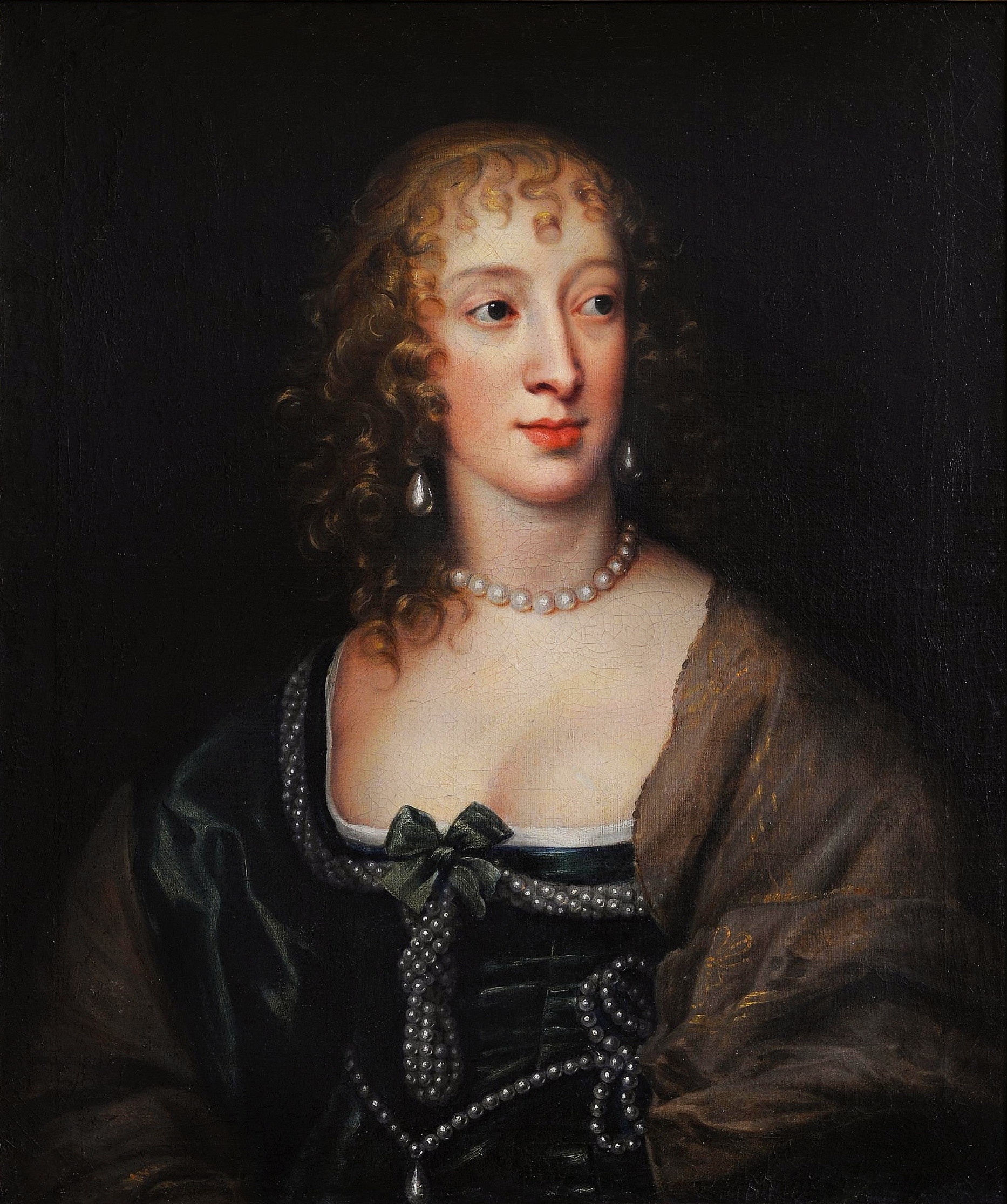|
William Maynard, 1st Baron Maynard
William Maynard, 1st Baron Maynard (10 July 1586 – 19 December 1640) of Easton Lodge, Little Easton, Essex was an English Member of Parliament. Biography He was the eldest son of Sir Henry Maynard of Easton Lodge and educated at the embassy in Paris (1598), St. John’s College, Cambridge (awarded MA, 1608) and entered the Inner Temple (1611). He was knighted in 1609 and succeeded his father in 1610. He was the Member of Parliament (MP) for Penryn (UK Parliament constituency), Penryn (1609–1611) and Chippenham (UK Parliament constituency), Chippenham in 1614. He was created a baronet in 1611, Baron Maynard of Wicklow in the Irish peerage in 1620 and Baron Maynard of Estaines ad Turrim (Little Easton) in the English peerage in 1628. He was Lord Lieutenant of Essex (6 August 1635 – 17 December 1640), Lord Lieutenant of Cambridgeshire (17 June 1640 – 17 December 1640) and Custos Rotulorum of Essex for life in 1640. In 1608, he married Frances, the daughter of William Ca ... [...More Info...] [...Related Items...] OR: [Wikipedia] [Google] [Baidu] |
Easton Lodge
Easton Lodge was a Gothic Revival architecture, Victorian Gothic style stately home in Little Easton and north-west of Great Dunmow, Essex, England. Once famous for its weekend society gatherings frequented by the Prince of Wales (later Edward VII of the United Kingdom, King Edward VII), it was one of many Destruction of country houses in 20th-century Britain, country houses destroyed during the 20th century. Part of the west wing (rebuilt as a separate house after a fire in 1918 for use as servants' quarters) still stands; and the Grade II listed gardens designed by Harold Peto are under restoration and opened to the public.Easton Lodge Gardens: History Parks and Gardens UK, accessed 2010-12-17 History [...More Info...] [...Related Items...] OR: [Wikipedia] [Google] [Baidu] |
Francis Crane
Sir Francis Crane ( 1579 – c. 1636) was the founder of Mortlake Tapestry Works at Mortlake on the south bank of the river Thames in South West London. Biography His parentage is obscure, but his family had close links to Cornwall, and both his sisters married Cornishmen. In April 1606 he had a grant for life of the office of Clerk of the Parliaments. He was appointed clerk to the council of Henry Frederick, Prince of Wales on 6 July 1611, and was later secretary to Charles I when the latter was Prince of Wales. During his secretaryship, he was knighted at Coventry on 4 September 1617. Crane obtained royal patronage for a project to make tapestry and arras in 1619. The tapestry works at Mortlake almost ruined Crane, as it involved him in the considerable outlay of capital for an inadequate return, and in 1623 he was forced to appeal to the King, James I for financial help. In that year Crane was making a suite of tapestries for Prince Charles. James I died in 1625 and ... [...More Info...] [...Related Items...] OR: [Wikipedia] [Google] [Baidu] |
1640 Deaths
Events January–March * January 6 – The Siege of Salses ends almost six months after it had started on June 9, 1639, with the French defenders surrendering to the Spanish attackers. * January 17 – Action of 12–17 January 1640, A naval battle over control of what is now Brazil, between ships of the Dutch Republic and those of the Kingdom of Portugal, ends after five days of fighting with the Dutch driving the Portuguese away from the port of Recife. * February 9 – Ibrahim of the Ottoman Empire, Ibrahim I (1640–1648) succeeds Murad IV (1623–1640) as Ottoman Emperor, Sultan of the Ottoman Empire. * March 8–March 13, 13 – Siege of Galle (1640), Siege of Galle: Dutch troops take the strategic fortress at Galle, Sri Lanka from the Portuguese. April–June * April 13 – The Short Parliament assembles, as King Charles I of England attempts to fund the second of the Bishops' Wars. * May 5 – The Short Parliament is dissolve ... [...More Info...] [...Related Items...] OR: [Wikipedia] [Google] [Baidu] |
1586 Births
Events January – March * January 3 – Augustus of Wettin, the Elector of Saxony, marries Agnes Hedwig of Anhalt, the 12-year-old daughter of Joachim Ernest, Prince of Anhalt. Augustus dies less than six weeks later. * January 18 – The 7.9 magnitude Tenshō earthquake strikes the Chubu region of Japan, triggering a tsunami and causing at least 8,000 deaths. * February 11 **After a two-day battle, an English assault force led by Francis Drake captures the South American port of Cartagena de Indias, part of Spain's colony, the Viceroyalty of Peru (now Cartagena in Colombia. **In Dresden, Christian I becomes the new Elector of Saxony, after the death of his father Augustus. * February 14 – In India, Yakub Shah Chak becomes the new Sultan of Kashmir after the death of his father, the Sultan Yousuf Shah. * February 16 – In what is now Buner District, Pakistan, Kalu Khan leads his Yousafzai-Afghan Lashkar to defeat the Mughal Army at the Karak ... [...More Info...] [...Related Items...] OR: [Wikipedia] [Google] [Baidu] |
Maynard Baronets
Maynard may refer to: Names * Maynard (given name) * Maynard (surname) Places Canada * Maynard, Ontario, a village in Augusta Township United States * Maynard, Arkansas * Maynard, Iowa * Maynard, Kentucky * Maynard, Massachusetts * Maynard, Minnesota * Maynard, Ohio Other uses * ''Maynard'' (album), by Maynard Ferguson, 1981 * Maynard (software), a shell for Weston competing with the GNOME Shell * Maynard Electronics, an American company that manufactured tape drives in the 1990s * The Maynard School, a girls' school in Exeter, UK * Maynard tape primer, a system for reloading muskets * Maynards Maynards was a British confectionery manufacturer best known for manufacturing wine gums. It was acquired by Cadbury in the 1990s, which in turn was acquired by Mondelez International (originally Kraft Foods) in 2010. In 2016, the brand was j ..., a sweets manufacturer in the United Kingdom See also * Justice Maynard (other) * '' Maynard v. Cartwright'', a 1988 United ... [...More Info...] [...Related Items...] OR: [Wikipedia] [Google] [Baidu] |
Baron Maynard
Baron is a rank of nobility or title of honour, often hereditary, in various European countries, either current or historical. The female equivalent is baroness. Typically, the title denotes an aristocrat who ranks higher than a lord or knight, but lower than a viscount or count. Often, barons hold their fief – their lands and income – directly from the monarch. Barons are less often the vassals of other nobles. In many kingdoms, they were entitled to wear a smaller form of a crown called a ''coronet''. The term originates from the Latin term , via Old French. The use of the title ''baron'' came to England via the Norman Conquest of 1066, then the Normans brought the title to Scotland and Southern Italy. It later spread to Scandinavian and Slavic lands. Etymology The word '':wikt:baron, baron'' comes from the Old French , from a Late Latin">-4; we might wonder whether there's a point at which it's appropriate to talk of the beginnings of French, that is, when it wa ... , ... [...More Info...] [...Related Items...] OR: [Wikipedia] [Google] [Baidu] |
Dudley North, 3rd Baron North
Dudley North, 3rd Baron North (158116 January 1666) was an English nobleman and politician. Biography North was the son of Sir John North and of Dorothy, daughter and heiress of Sir Valentine Dale. He succeeded his grandfather, Roger North, 2nd Baron North, at the age of nineteen. He was educated at Trinity College, Cambridge, and married in 1599 Frances, daughter of Sir John Brocket of Brocket Hall in Hertfordshire. He travelled in Italy, took part in the campaign of 1602 in the Netherlands, and on his return became a conspicuous figure at court, excelling in athletic exercises as well as in poetry and music, and gaining the friendship of Prince Henry. In 1606, while returning from Eridge to London, he discovered the springs at The Pantiles, Tunbridge Wells, which cured North himself of a complaint and quickly became famous. He also recommended the Epsom springs to the public. He supported and subscribed to the expedition to Guyana made by his brother Roger North () in 16 ... [...More Info...] [...Related Items...] OR: [Wikipedia] [Google] [Baidu] |
Theophilus Howard, 2nd Earl Of Suffolk
Theophilus Howard, 2nd Earl of Suffolk, (13 August 15843 June 1640) was an England, English nobleman and politician. Career Born at the family estate of Saffron Walden, he was the son of Thomas Howard, 1st Earl of Suffolk, by his second wife, Catherine Knyvet of Charlton, North Wiltshire, Wiltshire, Charlton, and succeeded his father as 2nd Earl of Suffolk and 2nd Baron Howard de Walden in 1626, along with some other of his father's offices, including the Lord-lieutenant, lord-lieutenancy of the counties of Lord Lieutenant of Suffolk, Suffolk, Lord Lieutenant of Cambridgeshire, Cambridge and Lord Lieutenant of Dorset, Dorset. Howard danced in ''Lord Hay's Masque'' to celebrate the marriage of James Hay, 1st Earl of Carlisle, James Hay and Honora Denny on 6 January 1607. On 9 February 1608 he performed in the masque ''The Hue and Cry After Cupid'' at Whitehall Palace as a sign of the zodiac, to celebrate the wedding of John Ramsay, 1st Earl of Holderness, John Ramsay, Viscount ... [...More Info...] [...Related Items...] OR: [Wikipedia] [Google] [Baidu] |
James Hay, 2nd Earl Of Carlisle
James Hay, 2nd Earl of Carlisle (1612 – 30 October 1660) was the Earl of Carlisle (2nd Creation), succeeding James Hay, 1st Earl of Carlisle. Hay was the second son of the 1st Earl, a Scottish nobleman, and his wife Honoria, heir to Edward Denny, 1st Earl of Norwich. James Hay was Colonel of a Regiment of Foot in Germany, and was appointed Knight of the Order of the Bath. In 1632 he married Margaret Russell, third daughter of Francis Russell, 4th Earl of Bedford. In 1639 he inherited the Carlisle Islands, later called Barbados. Between 1642 and 1646 he was a Royalist A royalist supports a particular monarch as head of state for a particular kingdom, or of a particular dynastic claim. In the abstract, this position is royalism. It is distinct from monarchism, which advocates a monarchical system of gove ... Colonel of a Regiment of Horse. He lived mainly in Barbados but returned in 1652. He died without issue on 30 October 1660. At his death, the peerage became exti ... [...More Info...] [...Related Items...] OR: [Wikipedia] [Google] [Baidu] |
Richard Weston, 1st Earl Of Portland
Richard Weston, 1st Earl of Portland, KG (1 March 157713 March 1634/1635), was Chancellor of the Exchequer and later Lord Treasurer of England under James I and Charles I, being one of the most influential figures in the early years of Charles I's Personal Rule and the architect of many of the policies that enabled him to rule without raising taxes through Parliament. Biography Weston was the eldest son and heir of Sir Jerome Weston, High Sheriff of Essex for 1599, and the former Mary Cave. He was born at Roxwell, Essex, and was a student of the Middle Temple. He served as Member of Parliament (MP) for a number of constituencies including Maldon (1601–1603), Midhurst (in the parliament of 1604–1611), Essex (in the Addled Parliament of 1614), Arundel (1622), Bossiney (1624), Callington (1625) and Bodmin (1626). He was knighted in 1603. During the reign of King James I of England, Weston was sent on embassies to Bohemia, Brussels, and Spain. On the last assignm ... [...More Info...] [...Related Items...] OR: [Wikipedia] [Google] [Baidu] |
Robert Rich, 2nd Earl Of Warwick
The name Robert is an ancient Germanic given name, from Proto-Germanic "fame" and "bright" (''Hrōþiberhtaz''). Compare Old Dutch ''Robrecht'' and Old High German ''Hrodebert'' (a compound of '' Hruod'' () "fame, glory, honour, praise, renown, godlike" and ''berht'' "bright, light, shining"). It is the second most frequently used given name of ancient Germanic origin.Reaney & Wilson, 1997. ''Dictionary of English Surnames''. Oxford University Press. It is also in use as a surname. Another commonly used form of the name is Rupert. After becoming widely used in Continental Europe, the name entered England in its Old French form ''Robert'', where an Old English cognate form (''Hrēodbēorht'', ''Hrodberht'', ''Hrēodbēorð'', ''Hrœdbœrð'', ''Hrœdberð'', ''Hrōðberχtŕ'') had existed before the Norman Conquest. The feminine version is Roberta. The Italian, Portuguese, and Spanish form is Roberto. Robert is also a common name in many Germanic languages, including En ... [...More Info...] [...Related Items...] OR: [Wikipedia] [Google] [Baidu] |
John Bayly (politician)
John Bayly may refer to: * John Bayly (priest, died 1633), guardian of Christ's Hospital, Ruthin, and chaplain to Charles I * John Bayly (priest, died 1831), Dean of Lismore * John Percy Bayly (1882–1963), Fijian businessman, politician and philanthropist See also * John Bayley (other) * John Bailey (other) * John Baily (other) {{hndis, Bayly, John ... [...More Info...] [...Related Items...] OR: [Wikipedia] [Google] [Baidu] |



